Santa Maria dell’Isola sits high on a dramatic rocky outcrop, gazing out over the crystal-clear waters of the Tyrrhenian Sea. This breathtaking sanctuary has become the defining symbol of Tropea’s coastline.
Technically, it’s not on an island, but on a tall sandstone formation facing the town. Still, the church creates one of the most photographed and awe-inspiring scenes in southern Italy.
Whenever I visit Tropea, I feel drawn to this magical spot. The white church seems to float between the sea and sky, and honestly, it’s hard to look away.
Below Santa Maria dell’Isola, the beaches are just stunning. Soft white sand meets turquoise water so clear you can see all the way to the bottom.
I’ve spent lazy afternoons swimming in these pristine waters, always glancing up at the sanctuary above. The contrast between the rugged cliffs, historic architecture, and those almost-too-perfect beaches just feels surreal.
Climbing the steps carved into the rock to reach the sanctuary isn’t just a spiritual journey. The walk rewards you with panoramic views that stretch across Calabria’s “Coast of the Gods.”
The sea breeze mixes with the scent of blooming flowers from the church gardens. It’s a sensory experience that really captures something essential about southern Italy’s coastal charm.
Here, legend, beauty, and history seem to come together in one unforgettable landmark.
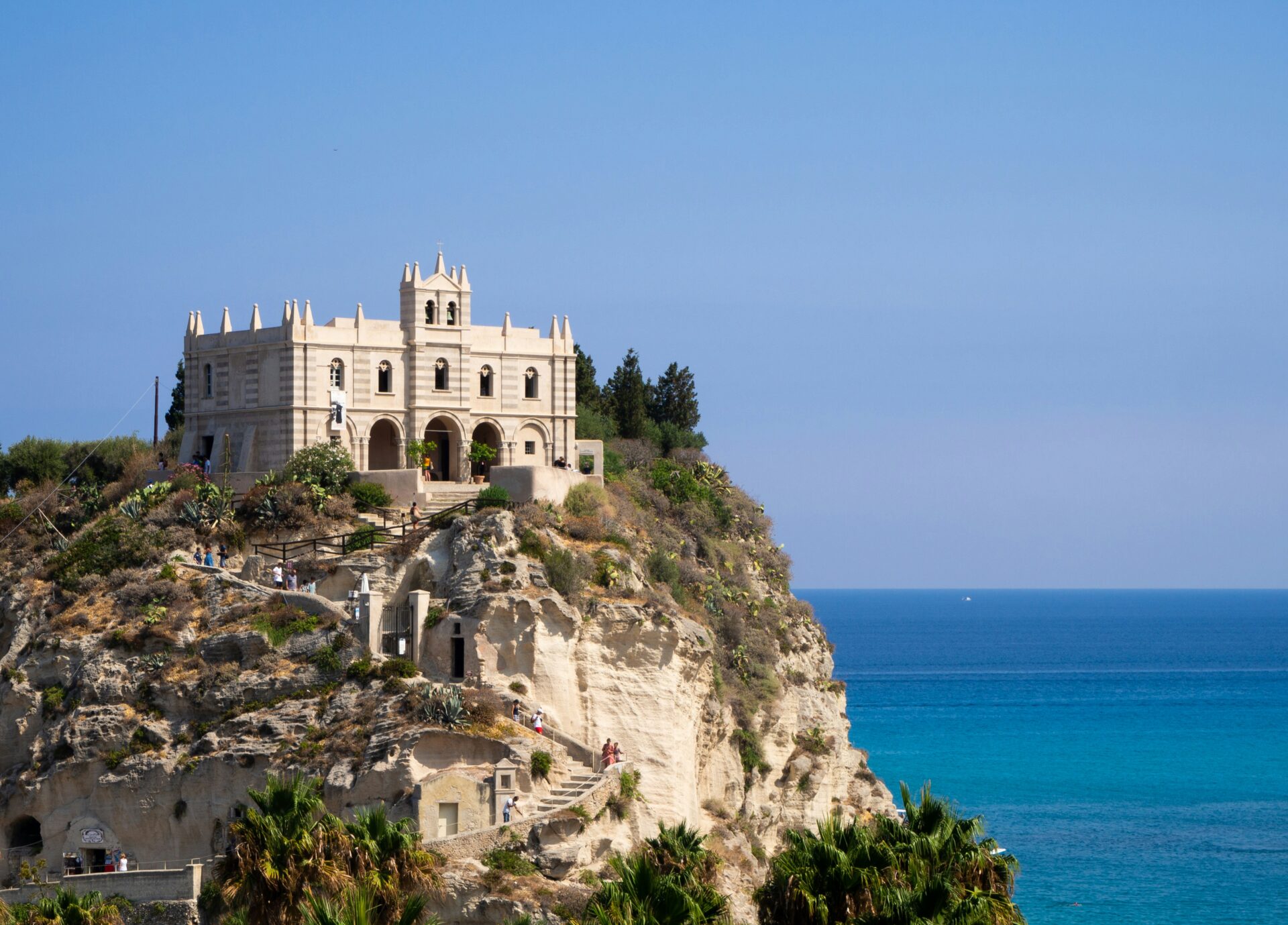
The Sanctuary of Santa Maria dell’Isola: Tropea’s Crown Jewel
Santa Maria dell’Isola stands dramatically on its rocky perch above the Tyrrhenian Sea. People recognize it instantly—it’s probably the most iconic landmark in Tropea.
The sanctuary seems to hover between the blue sea and sky, creating a scene that’s become almost synonymous with Calabria’s coastline.
Historic Origins and Legends
The sanctuary’s roots reach back to medieval times, but the exact founding date? Still a bit of a mystery.
Local legends say Eastern monks founded the church around the 7th century, fleeing religious persecution.
What really fascinates me is the name “dell’Isola”—of the island. Originally, this rock formation stood completely separate from the mainland. You could only reach it by boat.
Over centuries, natural sand slowly built a land bridge, finally connecting the rock to Tropea’s shoreline.
The site has weathered its share of disasters, including major earthquakes in 1783 and 1905 that badly damaged the church. Each time, the people of Calabria rebuilt their beloved sanctuary.

Architectural Marvels
Walking up the stone staircase carved into the rock, I always notice the sanctuary’s unusual blend of architectural styles. The current building mixes Byzantine, Norman, and later Renaissance influences.
The façade is simple but elegant, with clean white walls that stand out against the blue sea. Inside, I found intricate decorations, religious artifacts, and artistic treasures that somehow survived the centuries.
But honestly, it’s the setting that makes this church so special. Built on several terraced levels, the sanctuary offers 360-degree views of Tropea’s coastline and, on clear days, you can even spot the Aeolian Islands, including Stromboli.
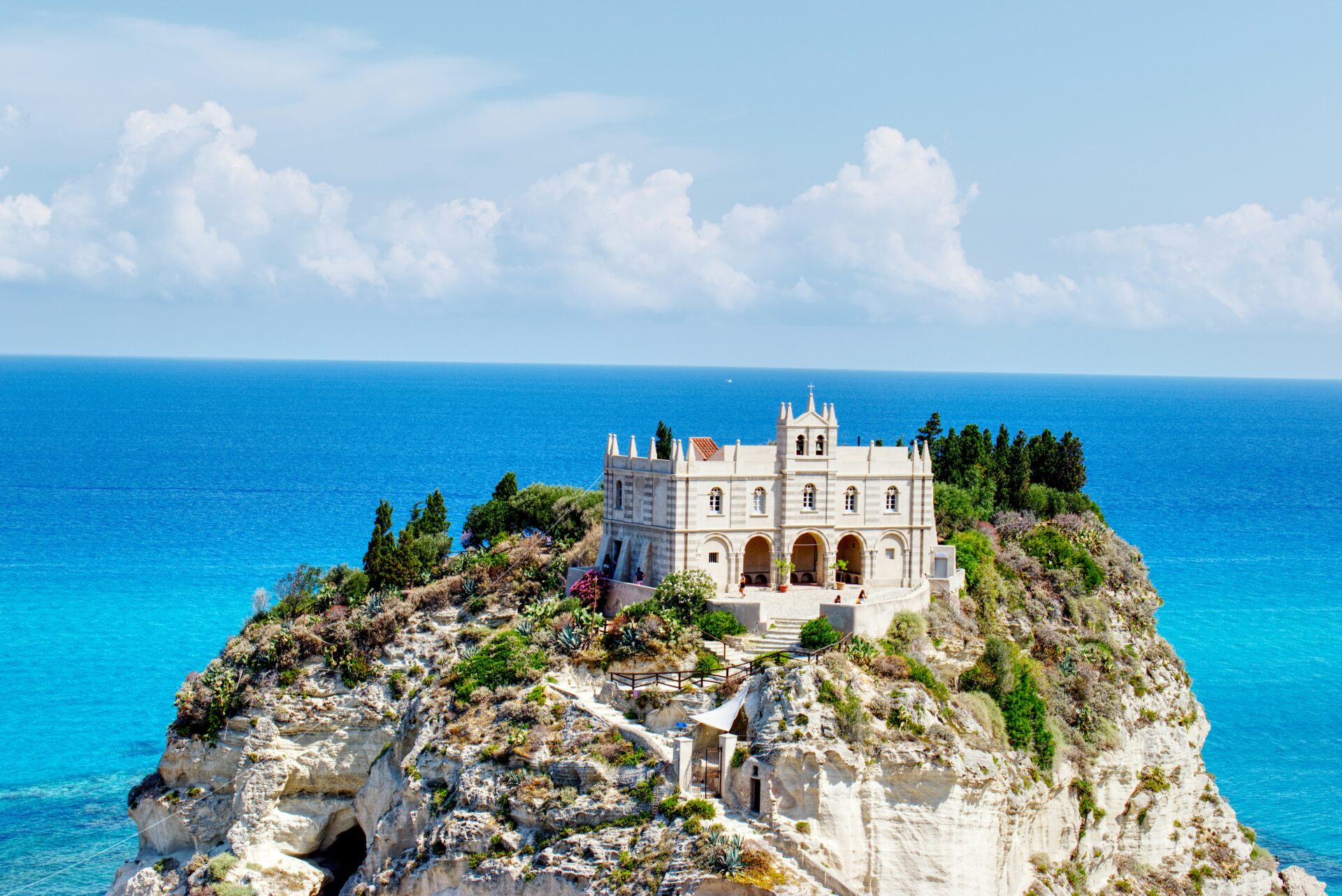
Restorations and Preservation Efforts
People have restored the sanctuary carefully over the years. After World War II, bombing damaged parts of the building, and that sparked a major renovation.
More recently, preservation efforts have focused on stabilizing the sandstone rock beneath the church. Sea and wind erosion constantly threaten this fragile foundation.
Local conservation groups now work with Italy’s cultural heritage authorities to maintain the church and its gardens. These terraced gardens are filled with Mediterranean plants and make for fantastic photos.
Thanks to these efforts, visitors enjoy improved access and informative plaques about the sanctuary’s history. The site manages to balance being an active place of worship and one of Calabria’s most visited attractions.
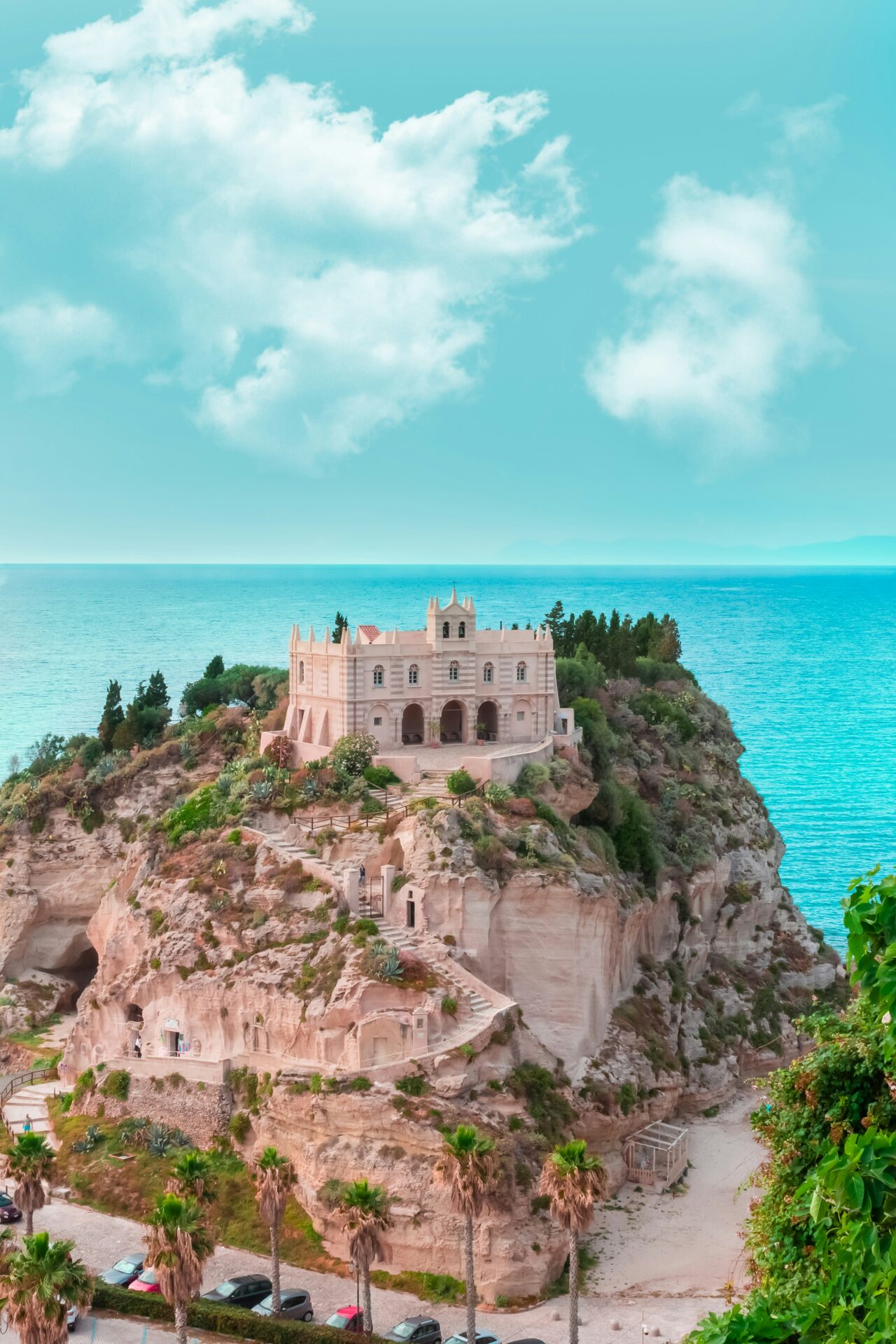
Captivating Views and Beachfront Splendor
Santa Maria dell’Isola’s surroundings offer some of Italy’s most breathtaking panoramas. From up here, you get the perfect mix of natural beauty and cultural significance.
Tropea Beach and Its Azure Waters
I’ve seen a lot of Italian beaches, but Tropea’s shoreline really stands out. The powdery white sand and crystal-clear turquoise waters are almost unreal.
The beach stretches below the cliffs where the old town sits, creating a striking contrast between the rugged land and the gentle sea.
From the church’s viewpoint, I watched sunbathers dot the shore and colorful umbrellas scattered across the sand. The water shifts from pale aquamarine near the beach to deep blue farther out.
Looking up from the sand, Santa Maria dell’Isola seems to float between sea and sky, perched high on its sandstone promontory.
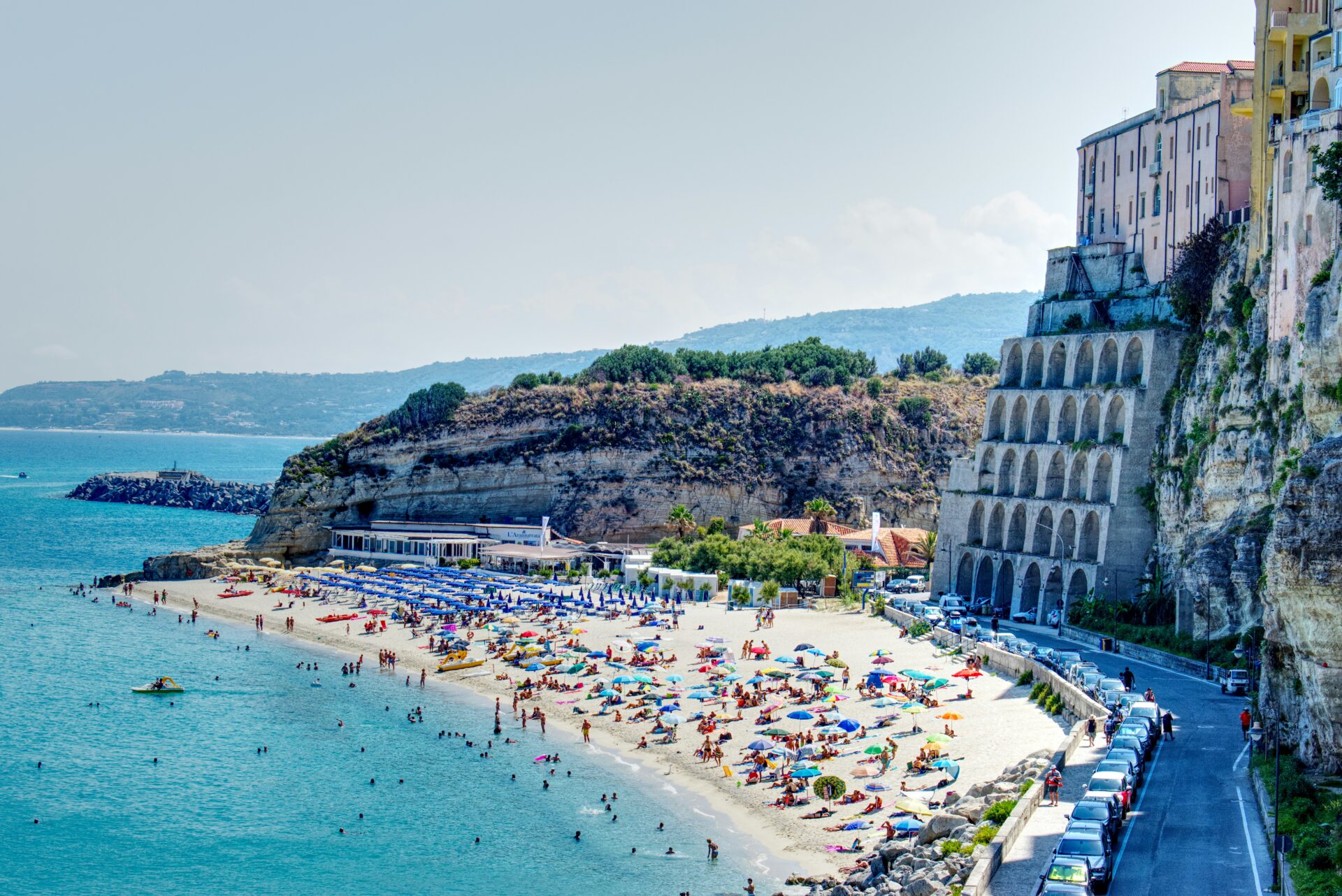
Italy’s Dramatic Coastline
The Calabrian coastline around Tropea is just spectacular. People call this stretch the “Coast of the Gods,” and for good reason.
Cliffs drop sharply into the Tyrrhenian Sea. Standing at the balcony at the end of Il Corso, I caught panoramic views that honestly took my breath away.
Rugged headlands, hidden coves, and the iconic island-like rock create a landscape that begs to be photographed.
The church itself is the best vantage point for appreciating this coastline. From up there, you can see for miles—watching fishing boats bob out at sea and waves crashing on the rocks below.
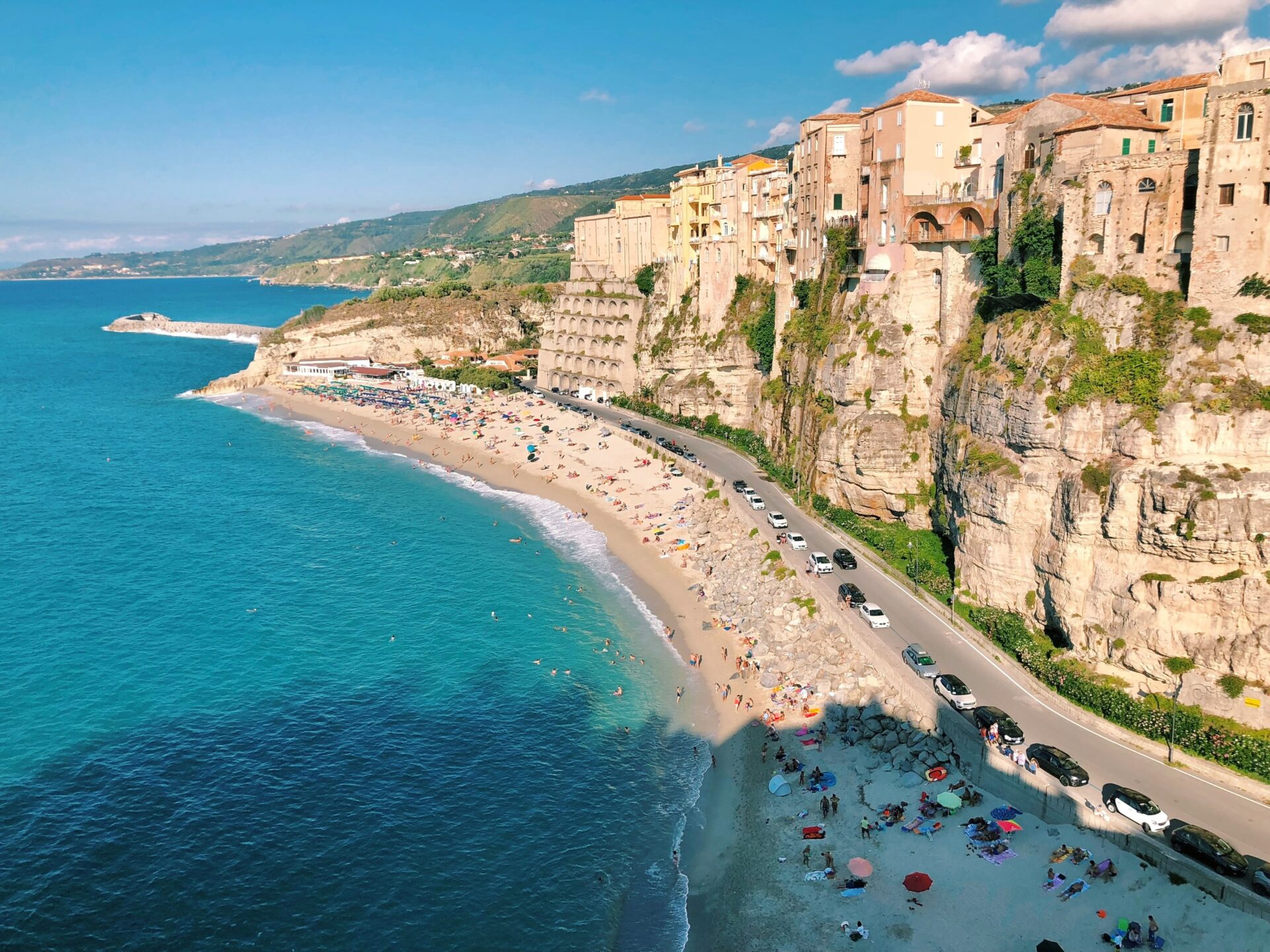
Photographing and Filming the Island Church
Santa Maria dell’Isola is a dream for photographers and videographers. The church perched on its rocky base creates perfect compositions from almost any angle.
Popular Angles and Image Orientation
Early morning gives the most magical light for photos. The golden sun lights up the white church walls, making them pop against the blue sea.
From the beach, I like to shoot vertically to capture the full height of the rock and church. This angle really shows off the sanctuary’s dramatic position.
For something different, I’ll climb partway up the stairs and shoot back toward town. That way, you get both the church and Tropea’s colorful buildings tumbling down the cliff.
Drones have become popular here, too. Aerial shots reveal how the church sits between the turquoise water and the town’s cliffside buildings.
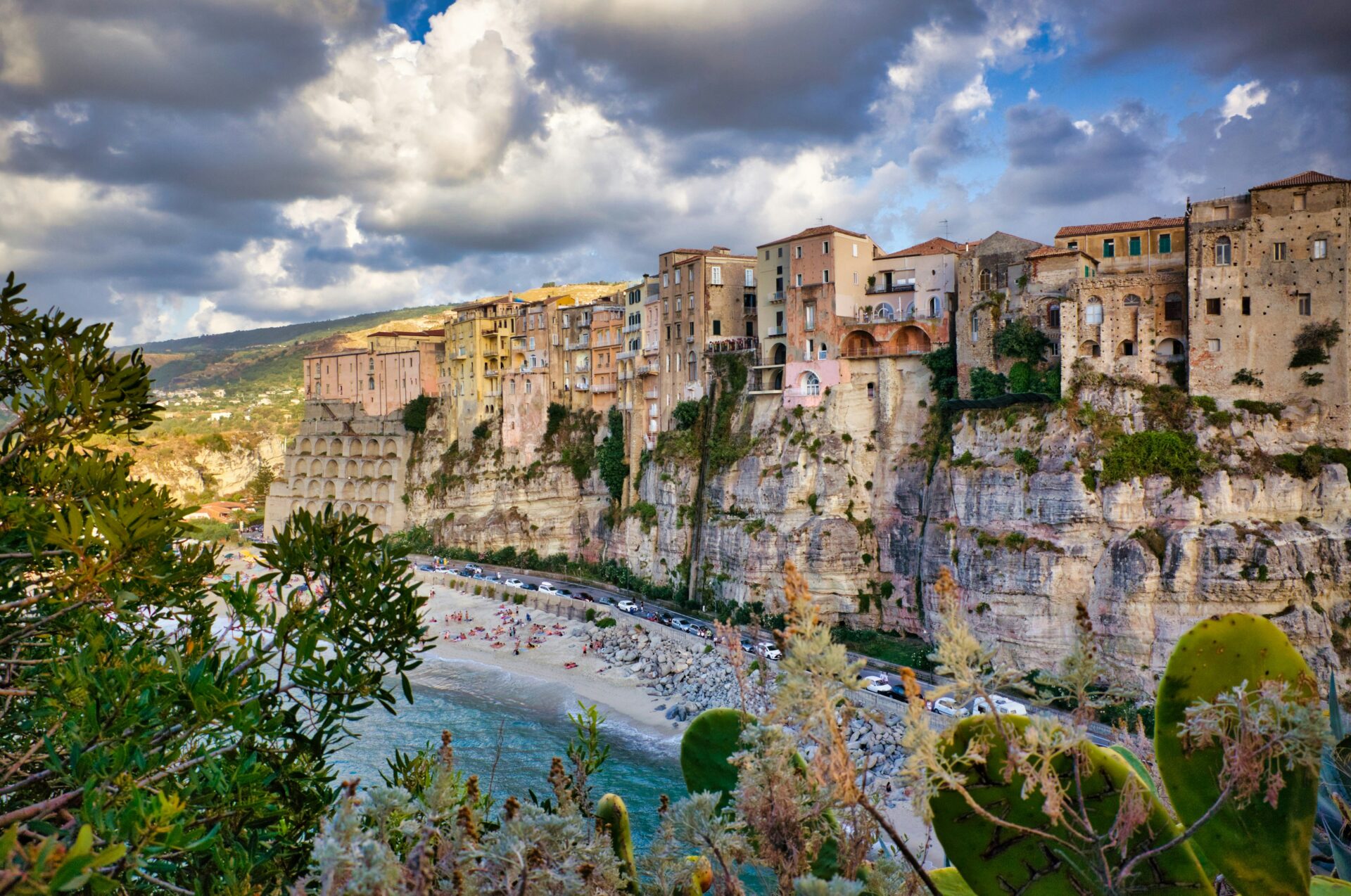
Color Composition and Resolution Tips
The colors around Santa Maria dell’Isola are just stunning. I try to capture the stark white church against the deep blues of the sea and sky.
A few tips I’ve picked up for best results:
- Shoot in RAW for more editing control later
- Use a polarizing filter to make the blues richer
- Underexpose a bit to keep detail in the bright white walls
The golden hour before sunset gives everything a warm, dreamy glow. Amber and pink tones transform the church into something almost magical.
High resolution is a must here. The details in the architecture deserve to be crisp against that wild natural backdrop.
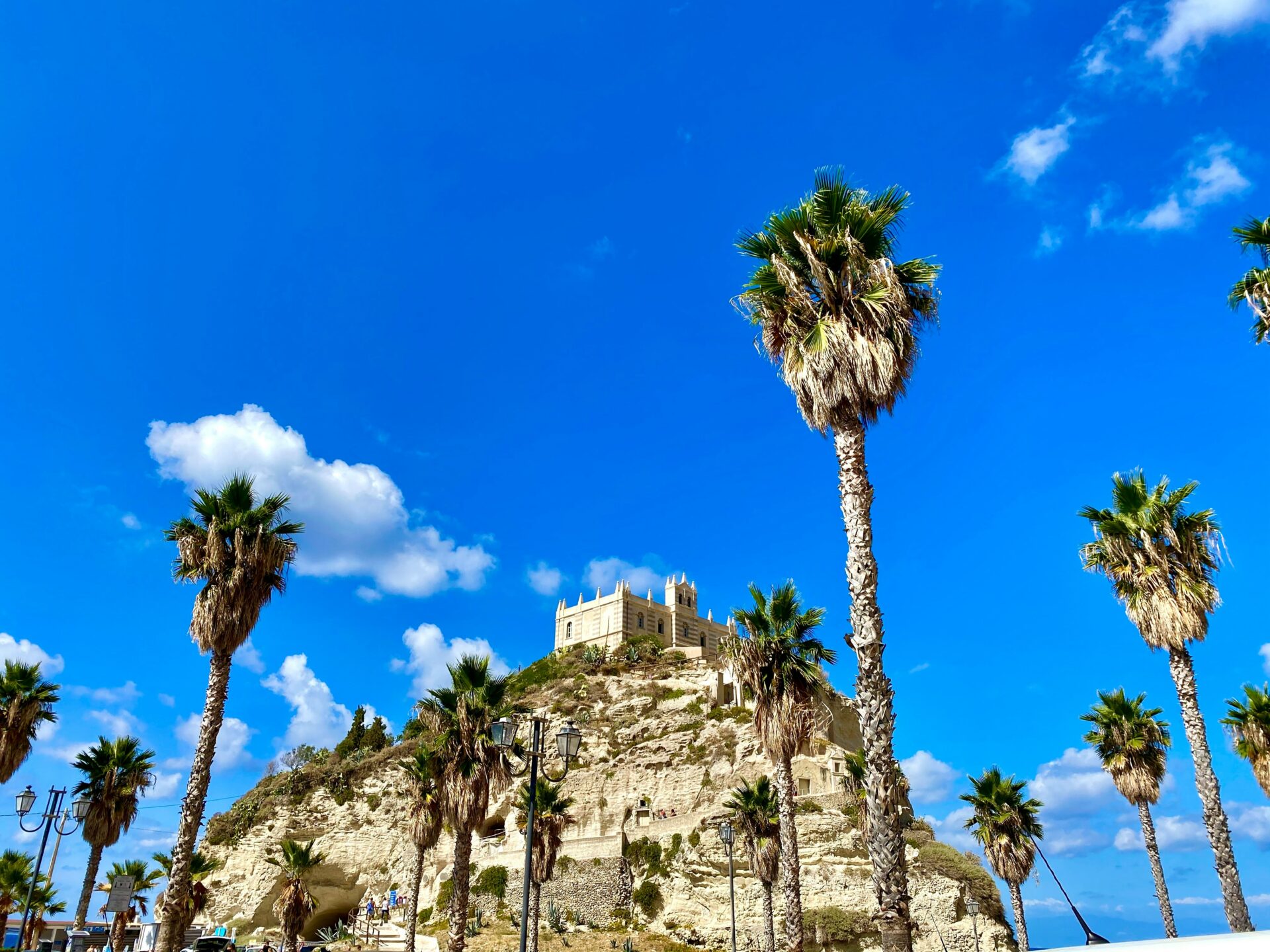
Videos and Storytelling
Filming Santa Maria dell’Isola, I like to build a story that captures both the landmark and the approach. The 100+ steps up to the church make for great footage and a sense of anticipation.
Time-lapse videos work beautifully—catching the changing light, waves crashing below, visitors climbing the stairs, and clouds drifting across the dramatic backdrop.
Including shots of the gardens and Mediterranean plants around the church adds context and depth to any video.
Walking shots up the stairs, if you stabilize them, make viewers feel like they’re discovering the place themselves. I always try to capture the sound—the waves, the wind around the church—it brings the scene to life.
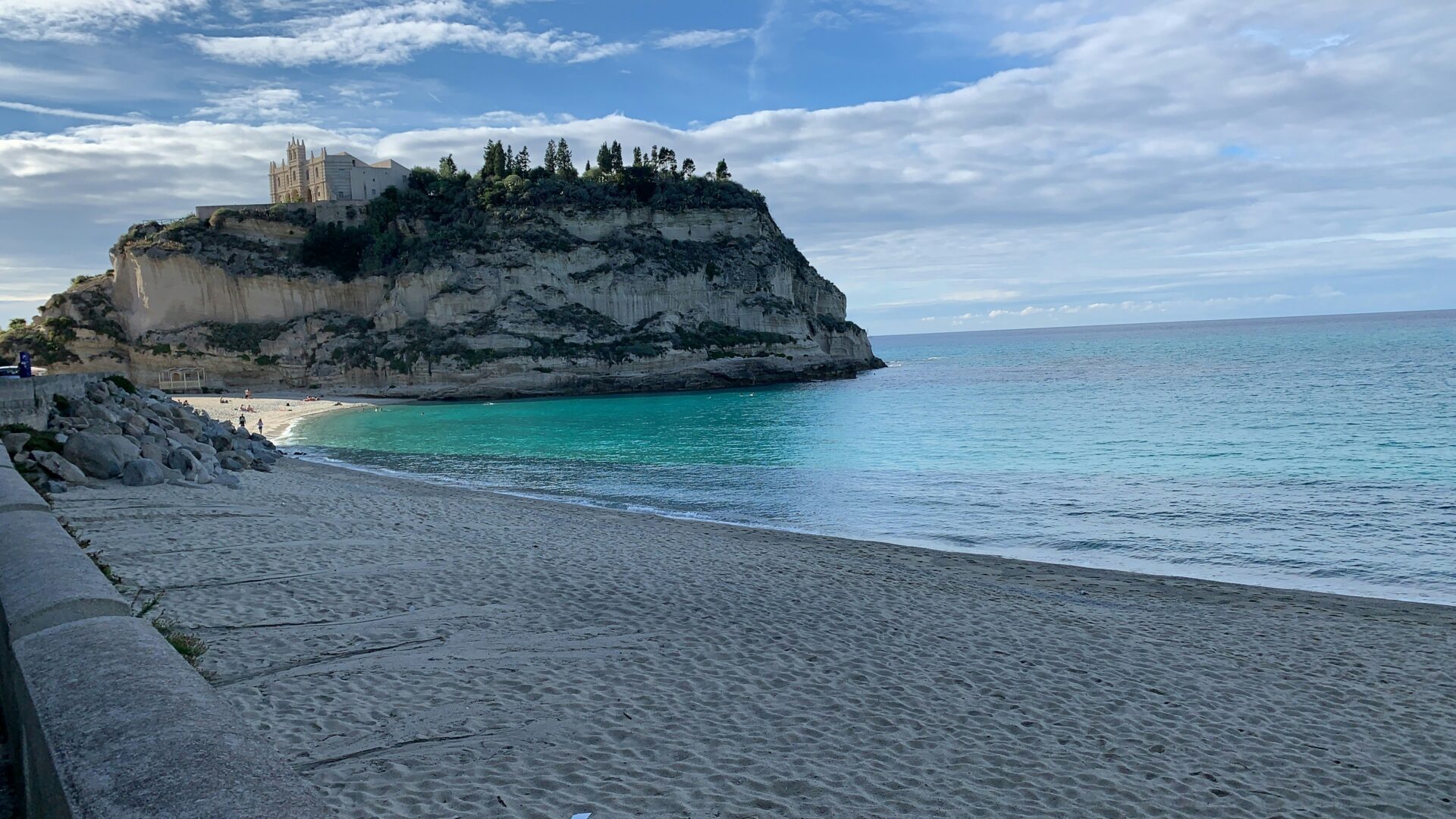
Finding, Using, and Licensing Island Church Images
Before my trip to Tropea, I wanted to find great images of Santa Maria dell’Isola. This iconic church is one of Italy’s most photographed landmarks, and finding the right photos involves knowing a bit about stock photography.
Stock Photos and Vectors
Adobe Stock has thousands of images of Santa Maria dell’Isola in all sorts of formats. When I searched, I found high-quality photographs showing the church from every angle and season.
Some images focus on the dramatic cliffside setting, while others capture architectural details.
I also discovered vector images. These illustrations can be resized without losing quality, which makes them great for travel brochures or blog headers.
The best stock sites let me filter by image type, orientation, and even time of day.
For my travel blog, I used a mix of close-ups and panoramic shots that highlight the church against Tropea’s coastline.
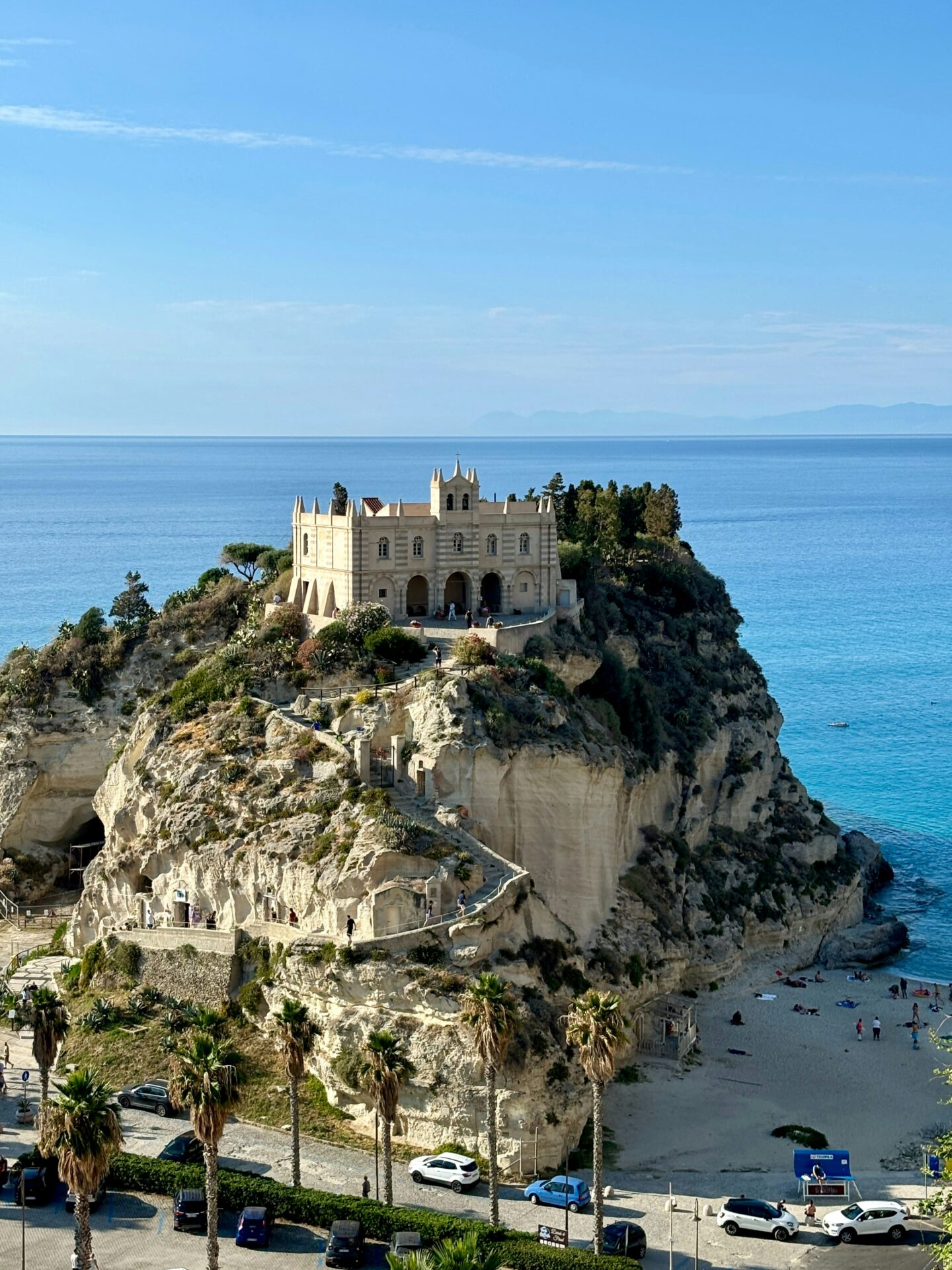
Royalty-Free and Editorial Content
Royalty-free images are the most flexible for travelers and bloggers. After one payment, I can use these Santa Maria dell’Isola photos as many times as I want. That worked perfectly for my travel journal and social media.
Editorial content has different rules. These photos document real places or events and usually can’t be used commercially. When I created my Calabria travel guide, I double-checked the usage rights.
Many sites offer safe search filters for family-friendly images and clear licensing. Dreamstime, for example, made it easy to find Tropea imagery with straightforward terms.
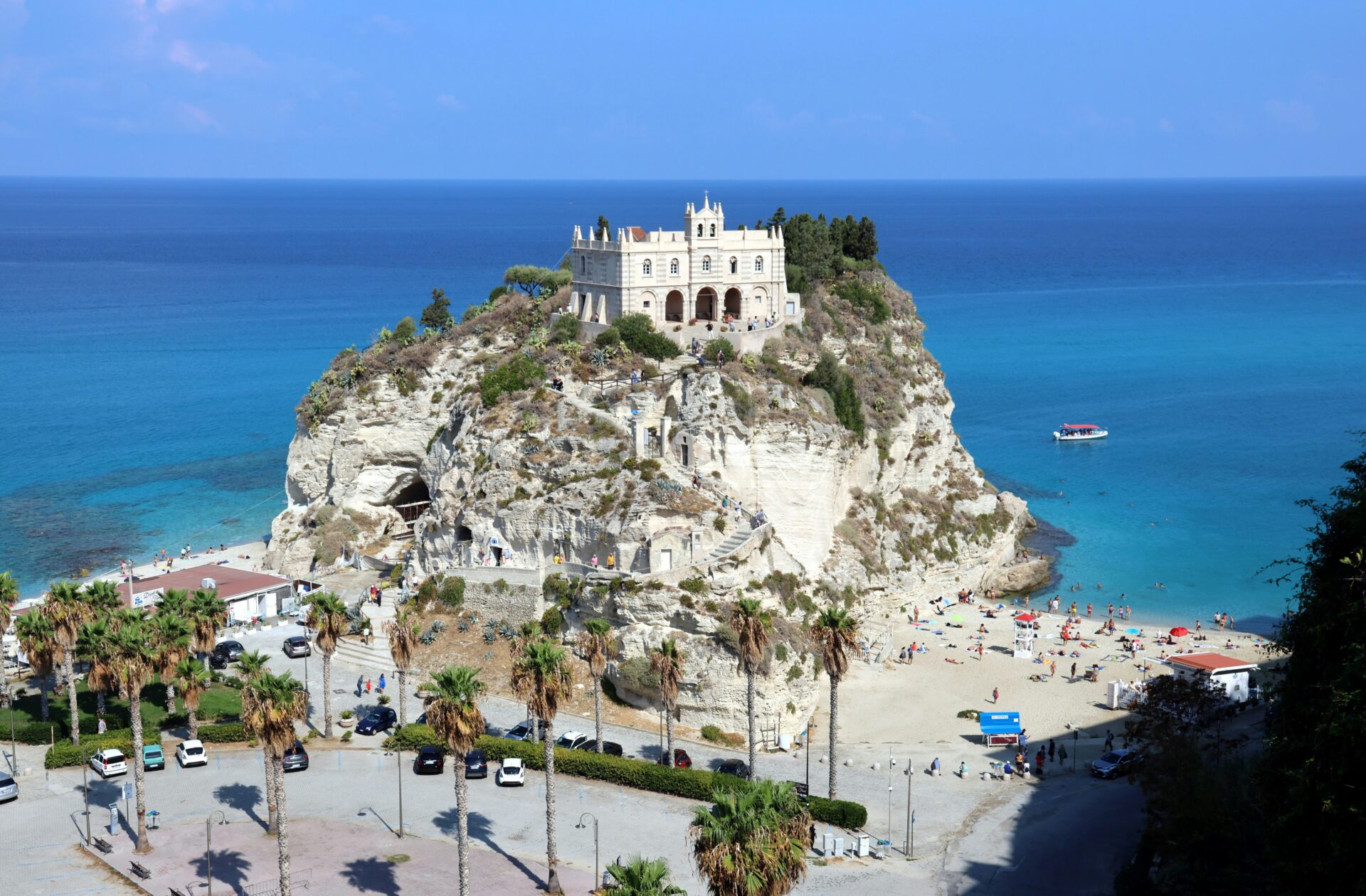
Exclusive and Extended Licenses
For my professional travel publication, I needed exclusive rights to some Santa Maria dell’Isola photos. Extended licenses gave me that, allowing commercial use and even merchandise.
These premium licenses cost more, but they gave me peace of mind for my Calabria guidebook. I could print unlimited copies and make postcards with these stunning images.
Some photographers offer completely exclusive licenses, so no one else can use the same photo. That was important for my book cover—I wanted it to stand out.
Whenever I select images, I check the specific terms. Extended licenses vary a lot between platforms, and understanding the details has saved me from copyright headaches.

Experiencing Tropea and Southern Italy
A trip to Tropea gives you the best of stunning coastlines, rich history, and authentic Italian culture. The region welcomes travelers with open arms and offers experiences that really capture the spirit of Southern Italian life.
Travel Insights and Tips
I’ve found that the best time to visit Tropea is in May-June or September. The crowds thin out, but the weather is still lovely.
The sea stays warm enough for swimming in September, and you get more space on those famous beaches.
Getting to Tropea takes a little planning. I recommend flying into Lamezia Terme Airport, then taking a train or renting a car for the 50-minute drive.
If you’re coming from Rome or Naples, the scenic train ride along the coast is worth the extra time.
You’ll find everything from charming B&Bs in the historic center to luxury resorts overlooking the sea. I stayed at a small, family-run pension with a terrace facing Santa Maria dell’Isola. The sunset views were unforgettable.
I’d say budget at least 3-4 days to really experience Tropea and the Calabrian coast.
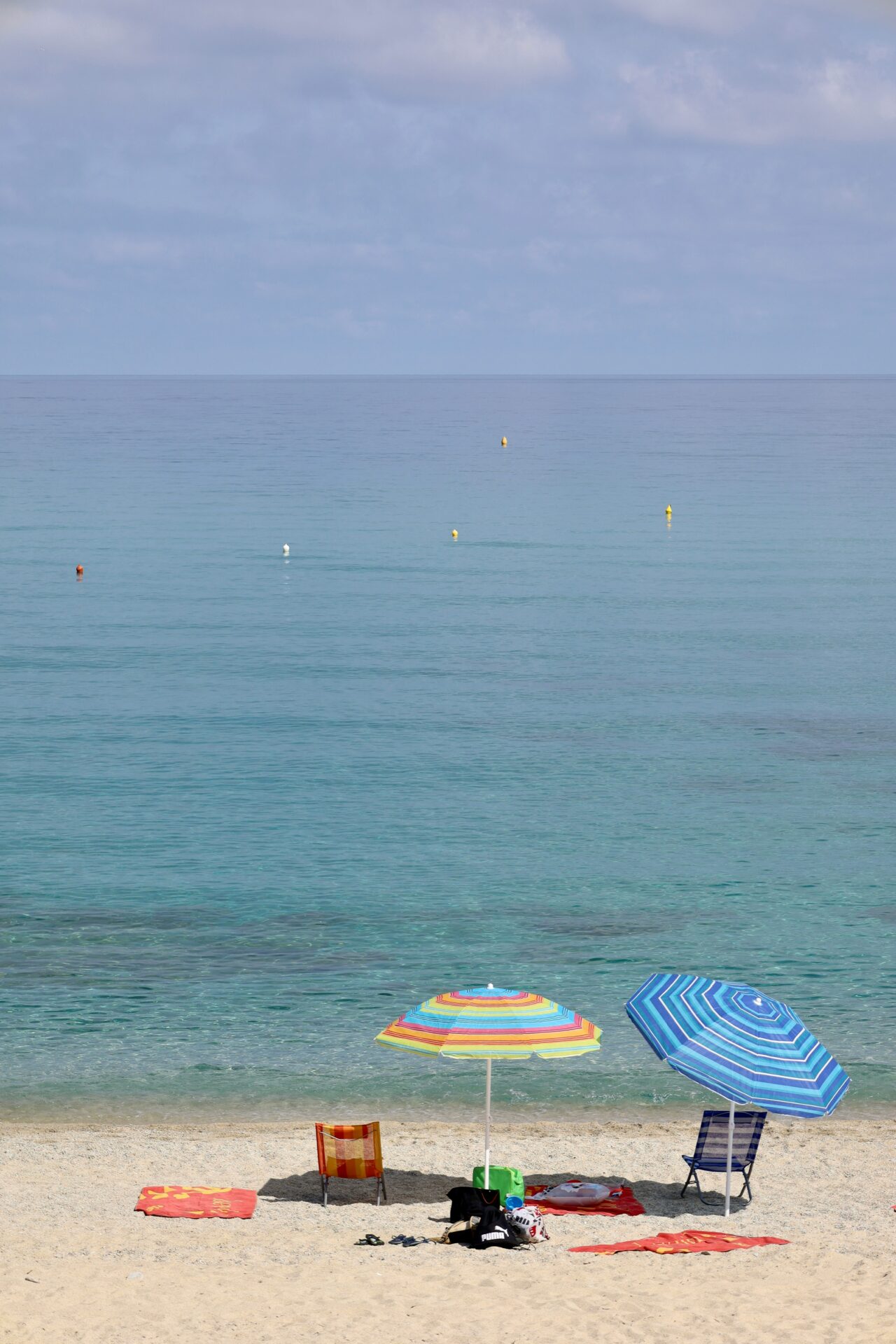
Local Culture and Attractions
Beyond the iconic Santa Maria dell’Isola, Tropea’s historic center really pulls you in. I wandered for hours through those narrow medieval streets, where shops tempt you with local products.
You can’t miss the famous red Tropea onions—they show up everywhere in the local cuisine. Seriously, just give them a try.
Down below, the beaches stun with some of the clearest water I’ve ever seen. Rotonda Beach quickly became my favorite, thanks to the dramatic rocks and that unreal turquoise water.
If you have a free day, take a trip outside Tropea. Capo Vaticano absolutely wowed me with its views. Then there’s Pizzo, where you’ve got to try the legendary tartufo ice cream.
I couldn’t resist picking up some spicy ‘nduja sausage and a couple bottles of local wine to bring home. They make great souvenirs—or, honestly, just snacks for the road.
As the sun goes down, locals gather for the evening passeggiata along Corso Vittorio Emanuele. You’ll want to join them; it’s one of those simple pleasures you remember.
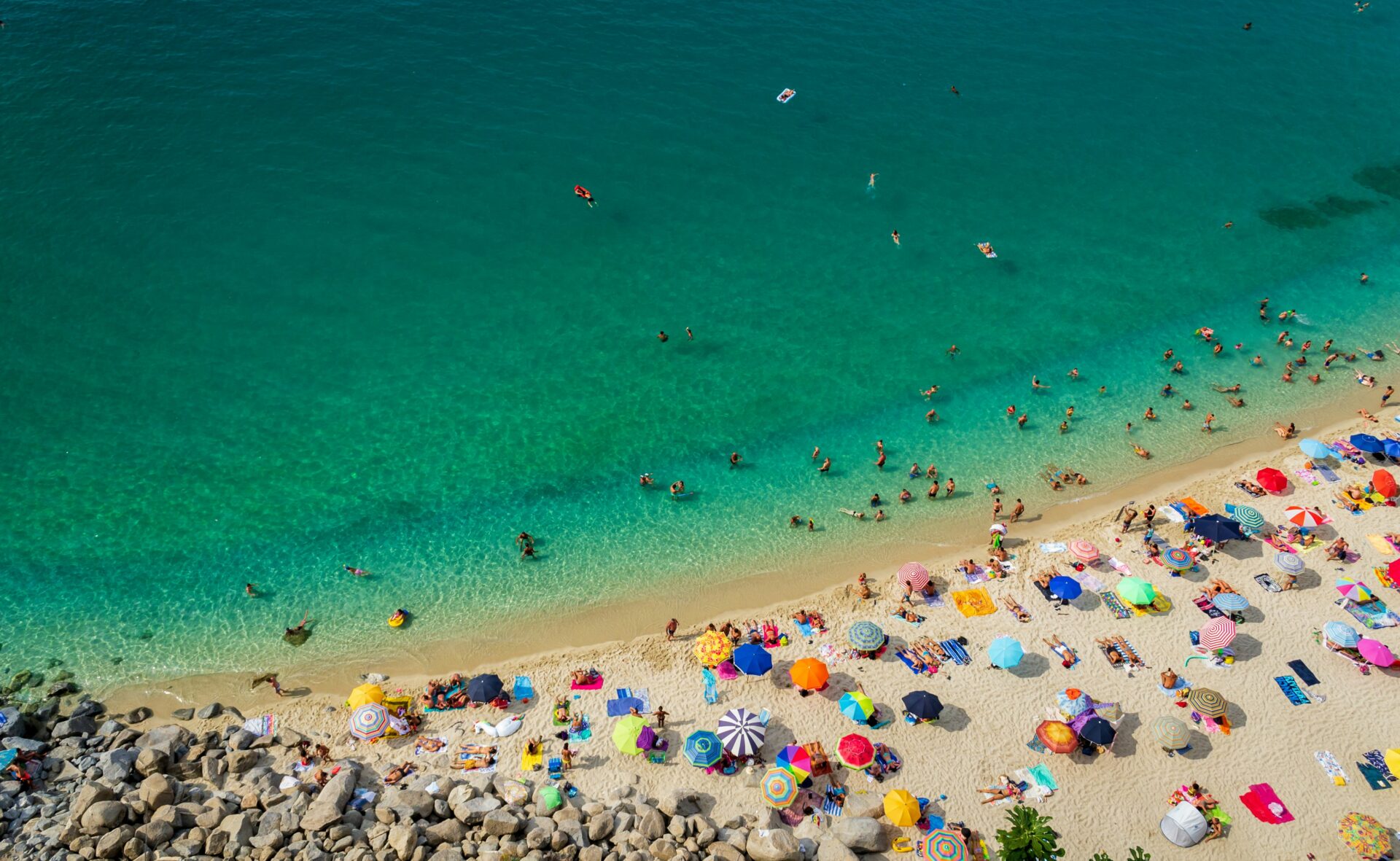
AI Generated Content and Modern Storytelling
When I started planning my trip to Southern Italy, I let AI tools guide me. They built itineraries around what I actually cared about, not just the tourist traps.
Suddenly, I found myself on secluded beaches and at small-town festivals—places I probably would’ve missed if I’d stuck to the usual guidebooks.
I relied on AI translation apps to talk with locals. Most of them didn’t speak much English, but that made every conversation feel more genuine.
Sometimes, those awkward exchanges turned into the best memories. I snapped photos with AI-powered tools that really brought out the wild contrast between Tropea’s cliffs and that crazy blue Mediterranean.
Digital storytelling platforms helped me piece it all together. I could mix in my photos of Santa Maria dell’Isola, add the sounds of the place, and even toss in some history.
It felt like I was sharing more than just a trip—I was inviting people into the story. The way ancient traditions and new tech mixed together? That’s what made the whole experience feel deeper.
I started to actually get why places like Santa Maria dell’Isola matter, beyond how stunning they look in pictures.

